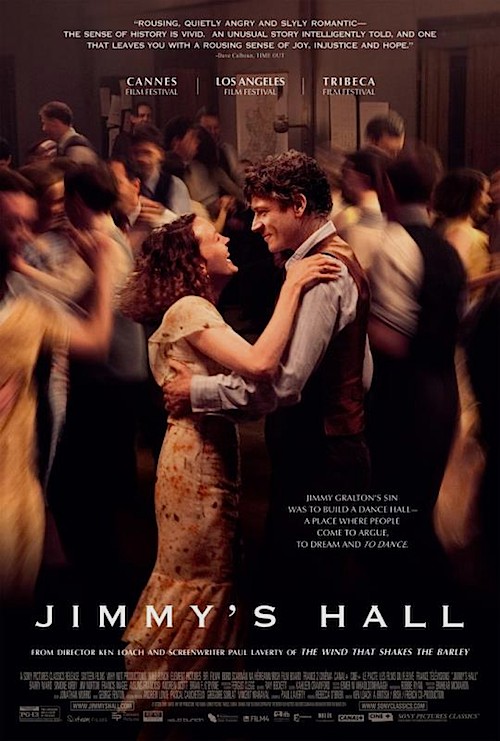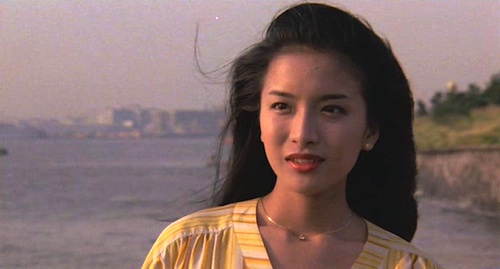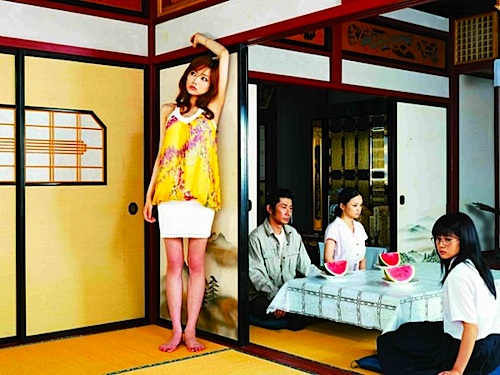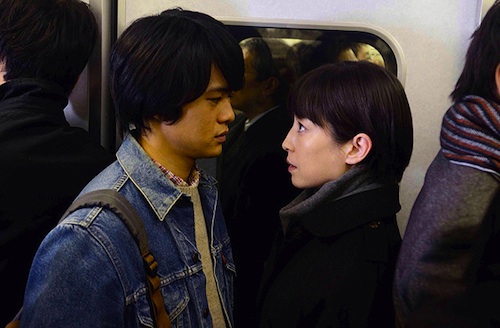By Joe Bendel. Prepare yourself for an alt-punk Oliver Sachs kind of story. There have indeed been documented cases of musicians who retained their musical skills while suffering from amnesia. It is a bit of a stretch to call Shigeo a musician, but he sure can belt out a power grunge ballad. He has also lost his memory, but he is probably better off without it. A clean slate could be the fresh start he needs in Nobuhiro Yamashita’s La La La at Rock Bottom, which screens as part of the 2015 New York Asian Film Festival.
Upon his release from prison, Shigeo is beaten senseless by his former criminal associates, who want him to take the hint and disappear. Instead, he wakes up sans memory in an industrial section of Osaka. Somehow he staggers into the park where the hybrid-band Akainu is playing. Much to everyone’s surprise, including his own, he storms the stage and proceeds with a full-throated rendition of what will become his signature tune. Akainu is managed by the teenaged Kasumi, who inherited the motley crew along with her father’s recording studio. She recognizes Shigeo can sing, even though he looks a frightful mess, so she takes him in, appropriately dubbing him “Pooch.”
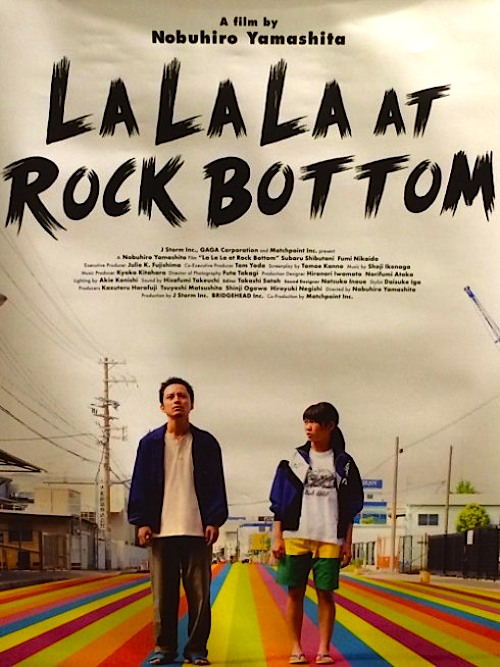 With Kasumi’s help, Pooch will start piecing together his identity. Of course, we know they will not necessarily like what they find out. There is a good chance it will all come to a head right before the big gig.
With Kasumi’s help, Pooch will start piecing together his identity. Of course, we know they will not necessarily like what they find out. There is a good chance it will all come to a head right before the big gig.
Shigeo/Pooch is played by real life Japanese rocker Subaru Shibutani of the band Kanjani Eight, whose distinctive voice would be perfect for Rush if they ever need to replace Geddy Lee. He also turns out to be a pretty good actor, playing the lost puppy and the low life creep equally convincingly. Pairing him up with the young, poised superstar-in-the-making Fumi Nikaido was also a shrewd strategy. She has a smart, charismatic presence, as well as a sense of naivety befitting her youth. The age difference also precludes any kind of manipulative romantic hogwash. They are definitely driving the film, but Sarina Suzuki adds some spicy flair as Makiko, Kasumi’s hard-drinking doctor friend.
There are no huge, huge, huge surprises in store for viewers over the course of Rock Bottom. Lessons will be learned and secrets will be revealed. Nonetheless, Yamashita plays his trump cards as close to his vest as he can. Ultimately the film is rather touching and the music is bizarrely catchy. Recommended for fans of films like Can a Song Save Your Life (or Begin Again as the distributor insisted on calling it), La La La at Rock Bottom (which probably should have been called Begin Again instead) screens this Thursday (7/2) at the Walter Reade and Saturday the 11th at the SVA, as part of this year’s NYAFF.
LFM GRADE: B+
Posted on July 3rd, 2015 at 12:30am.
